








The magazine of the art-form of the photo-essay
“A free, really high quality photo-essay magazine. Fabulous!”
Stephen Fry. British actor, writer and film & documentary maker

Jan 2016 back issue


by David Malin


Crystals have long intrigued humankind, in part because many show some sense of order or design in a largely chaotic
world, while others naturally sparkle or are deeply colored. These properties hint a deeper sense of order, which we
now know to be the regular arrays of atoms that make crystals what they are.
These ordered structures have distinctive optical effects, especially when seen under a microscope and illuminated in
polarised light. In an earlier life I used such microscopes in an applied chemistry lab to understand the nature of the
crystals themselves, and often noticed beautiful colors and shapes when I melted them on a microscope slide. The
pictures here capture some of their remarkable colors and forms.
Most of the chemicals mentioned in the captions are organic (carbon-based) laboratory reagents that are more or less
colorless, but show 'interference' colors like a soap bubble when they are in the form of a thin film and lit in a special
way. The colors are real, and can be used to measure to optical properties of the materials. Here, the pictures were
selected for their aesthetic appeal rather than for any scientific purpose.
The images were photographed on large format color film in the early 1970s, mostly using a simple microscope at low
magnification, typical 50 to 150 times magnification on the film. You will find many more here
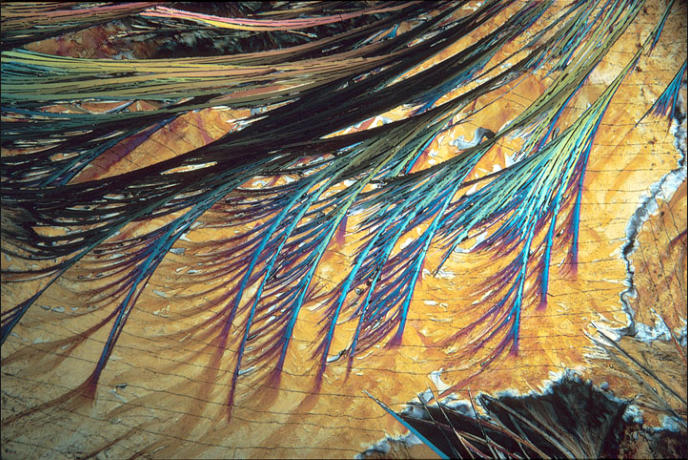
These feathery crystals of octadecanedioic acid do not hint at its common description as a 'fatty acid'.
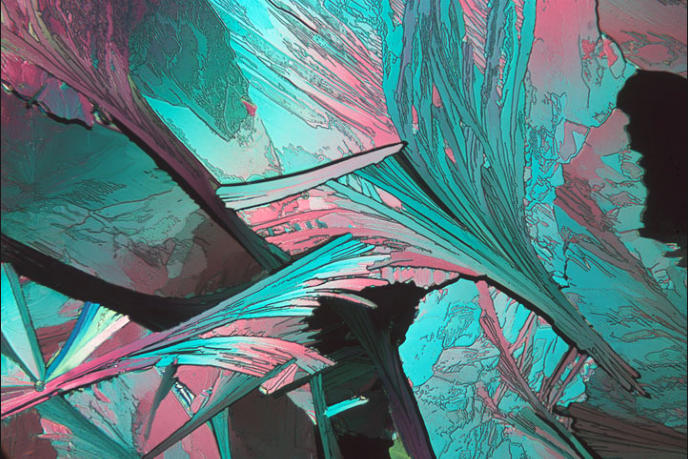
A mundane chemical (Crotonic acid) film reveals delicate hues under polarised light.
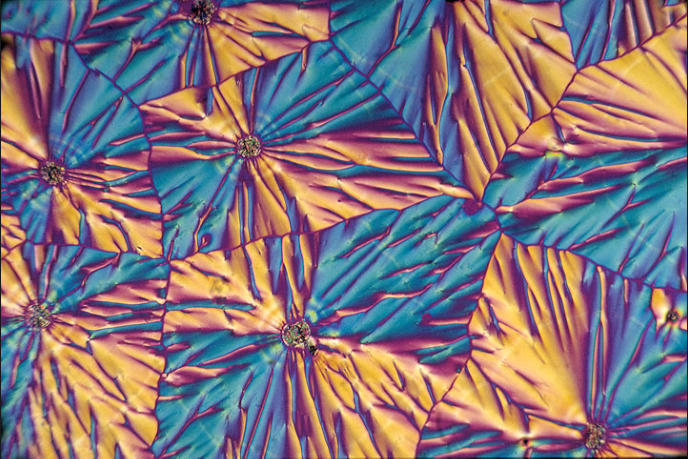
Vitamin C crystals, grown from a solvent give a 3-D appearance to what is a 2-D film.
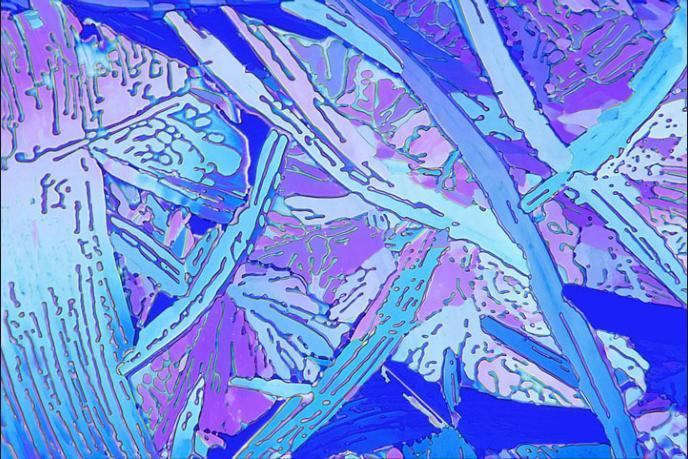
The different orientations of phenoxathin crystals create shades of blue and magenta.
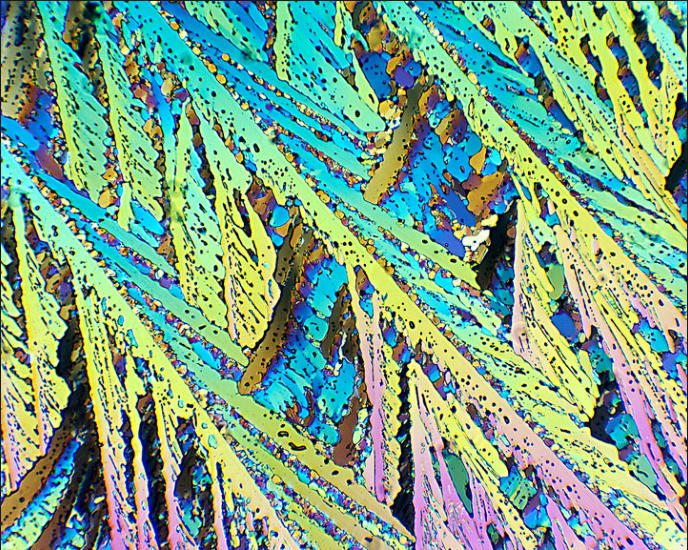
This intricate film of crystals was grown from a thin film of melted dipyridyl reagent.
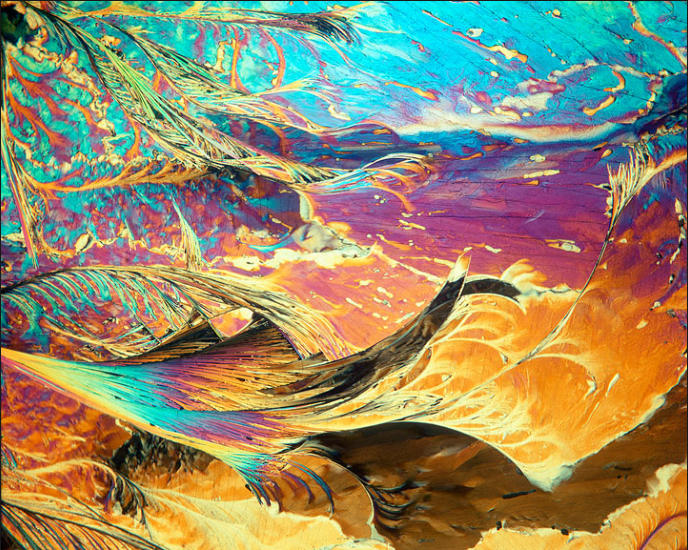
Anthrone is a common lab chemical that reveals its hidden beauty under the microscope.
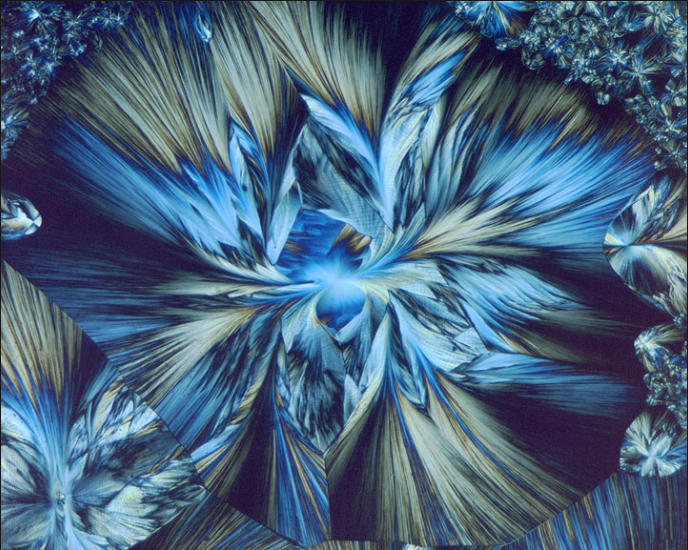
Dimedone is used in perfume, but grows chaotic crystals that appear bluish under polarised light.
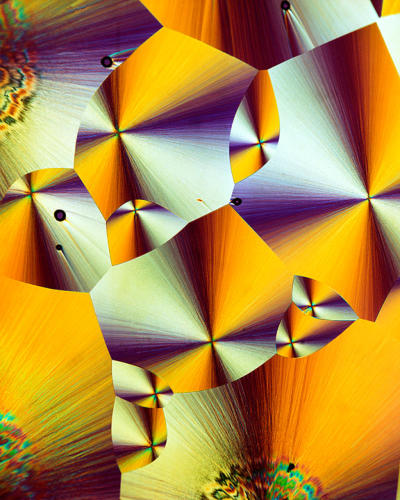
Spherulites of DDT crystals grown from a thin melted film.
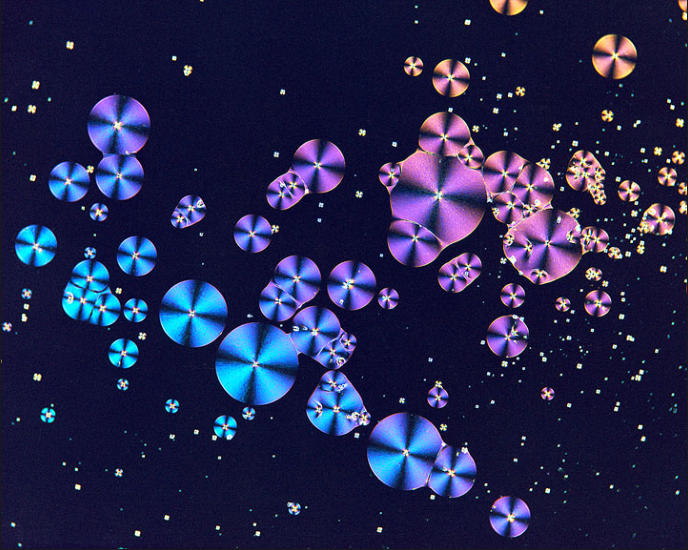
Cooling DDT grows as intriguing circular masses in a thin film.
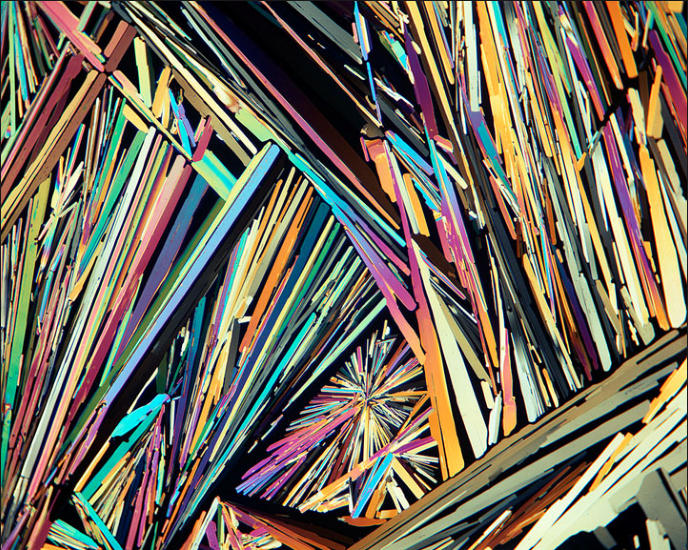
Fine needles of ortho-nitrophenol grown in a thin film.
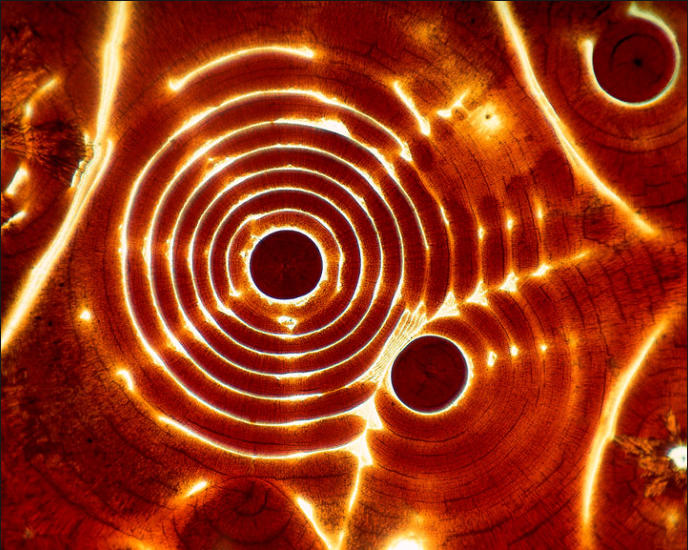
Unusual ridged spherulites grown from a melt film, photographed in transmitted light.
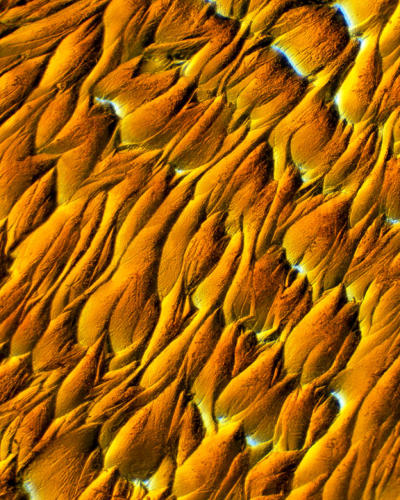
Flame-like features in crystals of a pharmaceutical intermediate.
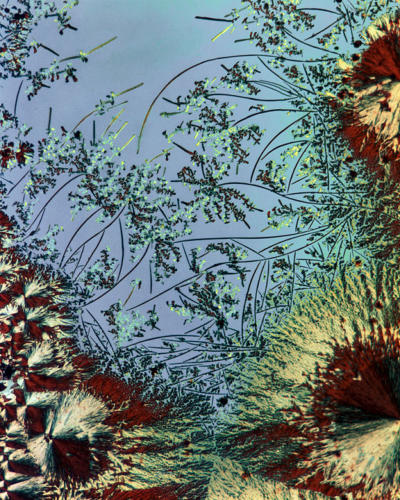
Elegant crystal growth from a solvent film.
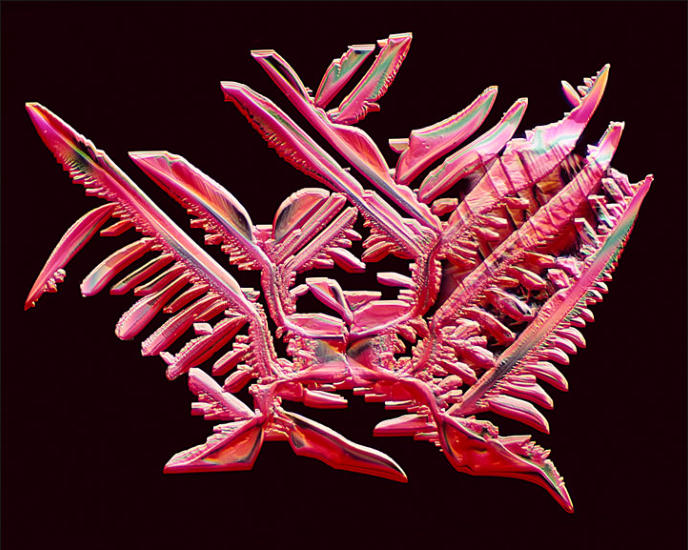
Crystals of resorcinol from solvent, oblique illumination.
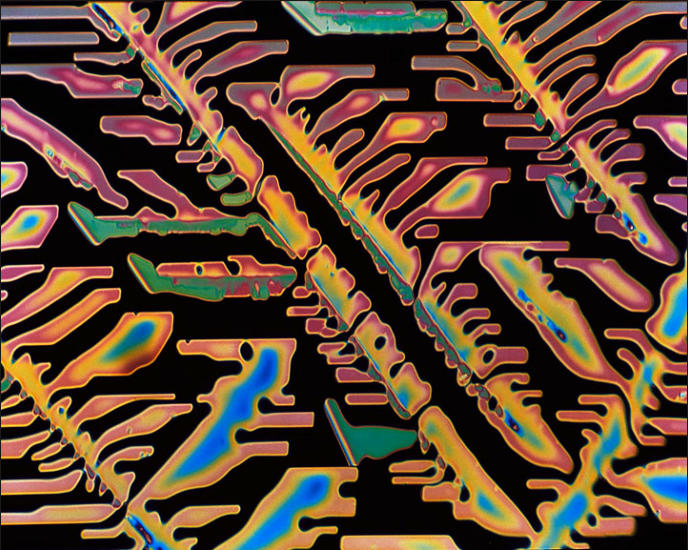
Delicate structure in urea crystals grown from solvent film.
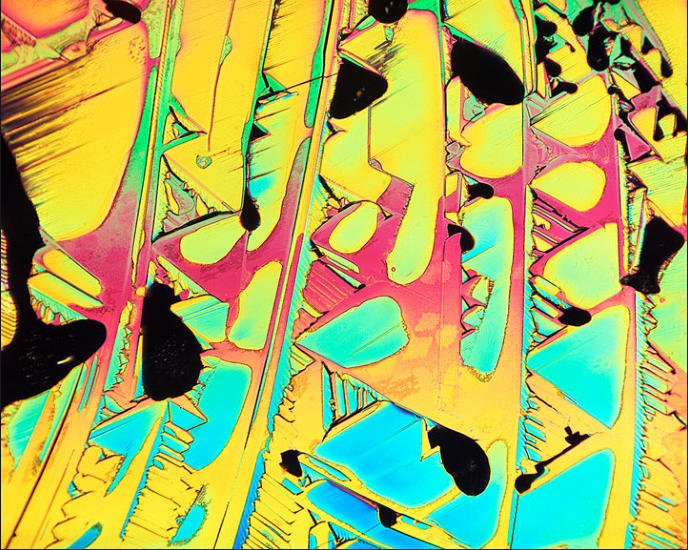
Polarised interference colors in a melted film of urea crystals.





